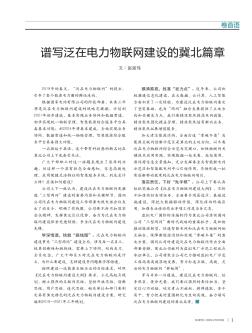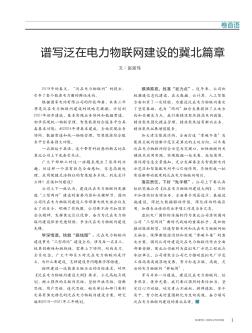Contents
1 Introduction 1
1.1 0verview of Ubiquitous Electric Internet of Things (UEIOT) 1
1.1.1 Features of Ubiquitous Electric Internet of Things 3
1.1.2 Composition of Ubiquitous Electric Internet of Things 3
1.1.3 Application Prospect and Value of Ubiquitous Electric Internet of Things 5
1.2 Key Techniques of UEIOT 8
1.2.1 Smart Electric Device Recognition 8
1.2.2 Internet of Things 9
1.2.3 Big Data Analysis 10
1.2.4 Cloud Platforms 13
1.2.5 Computational Intelligence 16
1.2.6 Smart Model Embedding 19
1.3Smart Device Recognition in UEIOT 21
1.3.1 Data Acquisition Module 22
1.3.2 Event Detection Module 23
1.3.3 Feature Extraction Module 25
1.3.4 Load Identification Module 28
1.4 Different Strategies for Smart Device Recognition 30
1.4.1Clustering Strategies for Device Recognition 31
1.4.2 0ptimizing Strategies for Device Recognition 32
1.4.3 Ensemble Strategies for Device Recognition 33
1.4.4 Deep Learning Strategies for Device Recognition 34
1.5 Scope of the Book 36
References 37
2 Smart Non-intrusive Device Recognition Based on Physical
2.1 Introduction 45
2.2 Device Recognition Method Based on Decision Tree 45
2.2.1 Evaluation Criteria 45
2.2.2 Basic Definitions of Physical Features 47
2.2.3 0riginal Dataset 49
2.2.4 The Theoretical Basis of Decision Tree 50
2.3 Device Recognition Method Based on Template Matching Method 55
2.3.1 The Basic Content of the Template Matching Method 55
2.3.2 Device Recognition Based on KNN Algorithm 56
2.3.3 Device Recognition Based on DTW Algorithm 60
2.4 Device Recognition Method Based On Current Decomposition 62
2.4.1 Introduction of the Current Decomposition Method 62
2.4.2 Physical Features of Current Decomposition 63
2.5 Experiment Analysis 65
2.5.1 Common Optimization Algorithms 65
2.5.2 Classification Results 67
2.5.3 Summary 71
References 73
3 Smart Non-intrusive Device Recognition Based on Intelligent Single-Label Classification Methods 81
3.1 Introduction 81
3.2 Device Recognition Method Based on Support Vector Machine 82
3.2.1 Feature Extraction 82
3.2.2 Steps of the Model Based on SVM 86
3.2.3 Performance Evaluation 87
3.3 Device Recognition Method Based on Extreme Learning Machine 90
3.3.1 Data Process and Feature Extraction 90
3.3.2 Steps of the Model Based on Extreme Learning Machine 91
3.3.3 Performance Evaluation 93
3.4 Device Recognition Method Based on Artificial Neural Network 96
3.4.1 Data Process and Feature Extraction 96
3.4.2 Steps of the Multi-layer Perceptron Based Model 97
3.4.3 Performance Evaluation 98
3.5 Experiment Analysis 101
References 104
4 Smart Non-intrusive Device Recognition Based on Intelligent Multi-Iabel Classification Methods 107
4.1 Introduction 107
4.1.1 Background 107
4.1.2Dataset Used in the Chapter 108
4.2 Device Recognition Method Based on Ranking Support Vector Machine 108
4.2.1 Model Framework 109
4.2.2 Data Labeling 110
4.2.3 Feature Extraction and Reconstruction 113
4.2.4 The Basic Theory of the Ranking Support Vector Machine 117
4.2.5 Multi-Iabel Classification Evaluation Indices 121
4.2.6 Evaluation of Ranking SVM in Terms of Multi-label Device Recognition 124
4.3 Device Recognition Method Based on Multi-label K-Nearest Neighbors Algorithm 130
4.3.1 Model Framework 131
4.3.2 Data Preprocessing 131
4.3.3 The Basic Theory of Multi-label K-Nearest Neighbors 132
4.3.4 Evaluation of MLKNN in Terms of Multi-label Device Recognition 134
4.4 Device Recognition Method Based on Multi-label Neural
4.4.1 Model Framework 137
4.4.2 Preprocessing of the Raw Data 137
4.4.3 The Basic Theory of Backpropagation Multi-label Learning 138
4.4.4 Evaluation of BPMLL in Terms of Multi-Iabel Device Recognition 138
4.5 Experiment Analysis 139
References 140
5 Smart Non-intrusive Device Recognition Based on Intelligent Clustering Methods 143
5.1 Introduction 143
5.1.1 Background 143
5.1.2 Cluster Validity Index 145
5.1.3 Data Preprocessing 147
5.2 Fast Global K-Means Clustering-Based Device Recognition Method 150
5.2.1 The Theoretical Basis of K-Means, GKM and FGKM 150
5.2.2 Steps of Modeling 154
5.2.3 Clustering Results 154
5.3 DBSCAN Based Device Recognition Method 158
5.3.1 The Theoretical Basis of DBSCAN 158
5.3.2 Steps of Modeling 160
5.3.3 Clustering Results 160
5.4 Experiment Analysis 164
References 166
6 Smart Non-intrusive Device Recognition Based on Intelligent Optimization Methods 169
6.1 Introduction 169
6.1.1 Background 169
6.1.2 Steady-State Current Decomposition 170
6.1.3 Data Description 172
6.1.4 Feature Extraction 174
6.1.5 0bjective Function 174
6.1.6 Evaluation Indexes 175
6.2 NSGA-II Based Device Recognition Method 176
6.2.1 The Theoretical Basis of NSGA-II 176
6.2.2 Model Framework 177
6.2.3 Evaluation2100433B

 谱写泛在电力物联网建设的冀北篇章
谱写泛在电力物联网建设的冀北篇章

 谱写泛在电力物联网建设的冀北篇章
谱写泛在电力物联网建设的冀北篇章